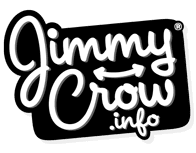Re-post from the ![]() blog
blog
SEO copywriting is an essential skill for anyone who wants to be successful online. It is the art and science of creating content that is loved by readers and search engines alike. Doing so is the key to rank high and convert well.
SEO copywriting is a relatively new field. In former times you were either an SEO specialist or copywriter. It’s only in recent years that SEO has gotten less technical and the importance of quality writing has gone up.
If you haven’t really dealt with this topic yet, don’t worry. Our SEO copywriting tips below will teach you all you need to know to get started. You will learn exactly what we understand under SEO copywriting and how you can start using it on your WordPress website.
Ready? Then let’s get going.
What is SEO Copywriting?
When trying to understand SEO copywriting, it helps to examine the two parts the word is made up of.
SEO, naturally, stands for search engine optimization. It is the method of optimizing your site and content to achieve high rankings in search engines.
Copywriting, on the other hand, is about the human side. A copywriter tries to find the right words and sentences to get visitors and readers to take a desired action. For that reason, to be an effective copywriter, you need to understand human psychology and have a keen insight into the audience you are writing for.
SEO copywriting combines these two disciplines in order to create compelling content that targets both search keywords and the hearts and minds of human readers. In order to do so, the discipline touches up the following elements:
- Technical SEO — That means all technical aspects of search engine optimization. Includes proper markup, fast loading times and mobile friendliness.
- Audience and keyword research — The bread and butter of SEOs. Finding out what people type into search engines, their intent and what else there is to know about them.
- Content creation — Taking the knowledge gathered in the step before and turning it into high-quality, relevant, compelling content that readers will love.
- On-page optimization — Putting the finishing touches to content to make sure search engines can understand what it’s about.
Clear so far? Then let’s see how to put this into practice. We will mostly concentrate on everything that deals with content creation as technical SEO is really the job of your theme (e.g. the Divi theme).
SEO Copywriting Tips For Effective Content Creation
Alright, now that we have the basics covered, let’s see what goes into effective SEO copywriting.
Audience and Keyword Research

The first step to creating content is knowing who is going to read it. Understanding your audience has a lot of influence on your content from topic selection over language usage to keywords. That’s also the reason why user research is part of advanced SEO techniques.
So, how do you do it? Here are a few ways to get more insight in your audience:
- Create marketing personas — Personas are fictional profiles of audience members. They help you understand you readers on a personal level let you find and create topics for them. A great guide to marketing personas is this one.
- Check your web analytics — Google Analytics and similar services are treasure troves of information about your audience. From what content they most like and what else they look at on your site to where they are from – you can learn a ton from your analytics.
- Do a competitor analysis — The best performing content on competitor sites and comments underneath will inform you about what your audience is looking for as well. This approach is also ideal to do Backlinko’s skyscraper technique.
- Search social media — We already mentioned in our advanced SEO techniques that users hang out in social network to talk about what they are interested in. All you need to do is listen to gain loads of insights.
- Perform keyword research — Of course, classic SEO work is also part of audience research. Knowing keywords and key phrases your audience types into Google allows you to understand them on a deep level.
With the above, you should be able to create a long list of potential topic ideas. Once you settle on one or more, you can move on to the actual writing part.
Content Creation Tips

When you have decided on a topic and/or keyword, it’s time to get to writing. Here are a few tips to make this process easier:
- Create an outline — Writing a blog post becomes infinitely easier if you have a scaffolding in place that you can work along. This is what an outline is for and it’s where most of the work happens. For a good outline, decide on the goal of your piece as well as the information you want to include and its order.
- Just write — Once you get to writing, just concentrate on volume. Don’t edit, don’t stop, don’t think about it too much. Just try to get the words out. Screw grammar and typos for now, that’s all taken care of in editing.
- Structure well — To make your text more legible, create lots of paragraphs, use headings and subheadings, lists (such as this one) and anything else that makes content scanable.
- Polish during editing — Once you get to the editing stage, the real work begins. Proofread, focus on sentence and paragraph structure as well as text flow. Particularly for the latter, use loads of transition words. Pro tip: Use the readability section in Yoast SEO.
With the above tips, content creation will get much easier. Also, consider asking someone else to go over your text, two pairs of eyes usually see more than one.
Optimize the Headline

The headline is one of the most important parts of your content. It’s the first thing users will see in the search engines and determines whether they will click through to your site or not.
For that reason, the title of your content deserves special attention and lots of consideration. If you feel out of your depth here, there are good places to learn about how to craft effective headlines:
- The Key To Writing Great Headlines That Drive More Traffic
- The Step-by-Step Guide to Writing Powerful Headlines
- How to Write Magnetic Headlines
- 49 Headline Formulas to Skyrocket Conversions (And Where to Use Them)
How important are headlines? Well, Jon Morrow, who is one of the biggest names in the blogosphere at one point wrote 10,000 headlines in order to get this part down. To great effect it seems.
Ok, now that we have our text ready, it’s time to put on our SEO hat and make sure search engines will love it as much as your readers.
Do On-Page Optimization

On-page optimization is crucial to make sure your content checks all the necessary SEO boxes. Failing to do so can exile a great piece of writing to a far off page in Google just because it is missing crucial markers.
Here’s what to look out for:
- Include keyword in all the important places — That means the URL, title, introduction, headings, image file names and ALT tags. Also pay attention to keyword density (between 0.5% and 2.5% is what Yoast recommend) and try to put the keywords in the beginning in all instances.
- Optimize the title tag and meta description — Both appear prominently in search engines. The title tag can be different from the original post title (especially if the original does not fit the SERPs) while the meta description should summarize the post and contain a call to action.
- Use images and other visuals — Including visual content is seen as a high quality marker by Google. It increases time on site and reduces bounce rates. Don’t forget to compress your images for fast loading times and optimize file names and ALT tags. The latter gives you extra keywords and allows you to pop up in Google image search.
- Include links — Do make sure to link both to external sites and your own content. This is helpful for readers and also lets Google further understand your topic and page structure.
If you need help with the above, you can use one of the many WordPress SEO plugins. Especially Yoast SEO and its content analysis tool will give you incredibly useful information and additional SEO copywriting tips.
Summing Up
SEO copywriting skills are something every website owner should invest in. It is the secret sauce to creating content that is loved by readers and picked up by search engines.
In this article, you have learned what we are talking about when we say SEO copywriting. We have also provided you with valuable SEO copywriting tips to kickstart your education in this area.
However, as everything, this skill needs practice. You won’t get it perfect the first time around and that’s ok. As long as you are willing to keep learning, you will improve over time.
Apart from that, together with the web and search engines, SEO copywriting will keep evolving, so it’s an ongoing learning process anyway. Yet, quite an enjoyable one.
